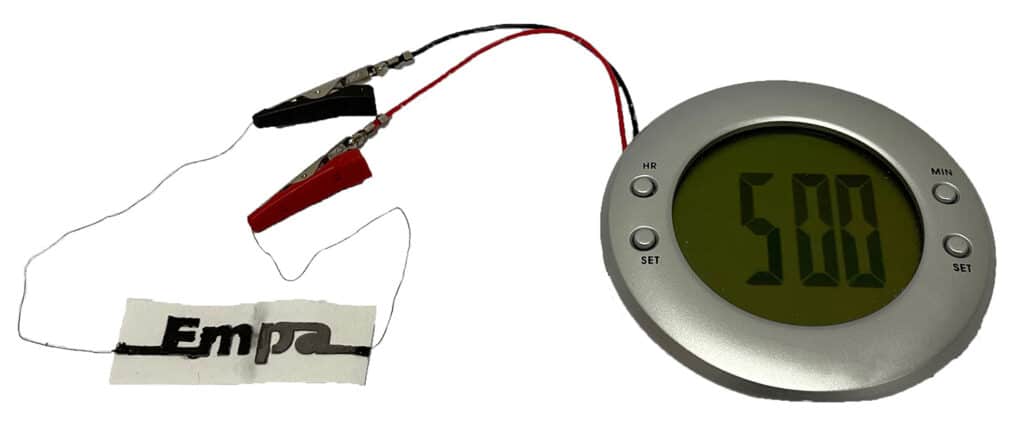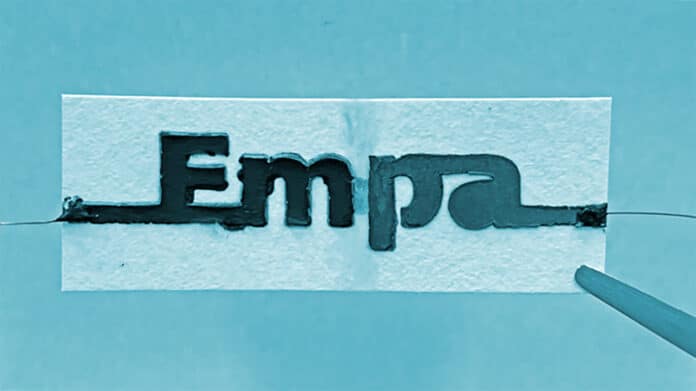Over the last decades, we have witnessed an ever-increasing use of electronic devices, leading in turn to electronic waste becoming the world’s fastest growing waste stream.
Now, a team of researchers at Switzerland’s Empa Institute has developed water activated disposable paper battery for single-use electronics. The battery could be used to power a wide range of low-power, single-use disposable diagnostic devices, smart packaging, and environmental sensing and minimize their environmental impact.
The battery is made of at least one cell measuring one centimeter squared and consisting of three inks printed onto a rectangular strip of paper. The paper substrate is impregnated with sodium chloride (table salt), and one of its shorter ends is dipped in wax to which two wires are attached.
An ink containing graphite flakes, which acts as the positive end of the battery (the cathode), is printed onto one of the flat sides of the paper. On the reverse side of the paper, they printed an ink containing zinc powder, which acts as the negative end of the battery (the anode). Yet another ink containing graphite flakes and carbon black is printed on both sides of the paper, on top of the other two inks. It connects the cathode and anode of the battery to the two wires at one end.

Once a small amount of water is added, the salts in the paper dissolve, and charged ions are released, making the electrolyte ionically conductive. These ions activate the battery by dispersing through the paper, resulting in zinc in ink at the anode being oxidized, thereby releasing electrons.
By closing the circuit, these electrons can then be transferred from the zinc-containing anode to the graphite cathode, where they are transferred to – and hence reduce – oxygen from ambient air. This redox reaction thus generates an electrical current that can be used to power an external electrical device.
In experiments, the research team combined two cells into one battery to increase the operating voltage and used it to power an alarm clock with a liquid crystal display. They found that the battery activated within 20 seconds after two drops of water were added. And when not connected to an energy-consuming device, it reached a stable voltage of 1.2 volts. The voltage of a standard AA alkaline battery is 1.5 volts.
The one-cell battery performance decreased significantly after one hour – due to the paper drying. However, after the researchers added two extra drops of water, the battery maintained a stable operating voltage of 0.5 volts for more than one additional hour.
The researchers propose that the biodegradability of paper and zinc could enable their batteries to minimize the environmental impact of disposable, low-power electronics. “What’s special about our new battery is that in contrast to many metal-air batteries using a metal foil that is gradually consumed as the battery is depleted, our design allows adding only the amount of zinc to the ink that is actually needed for the specific application,” says Gustav Nyström, lead researcher of the paper.
